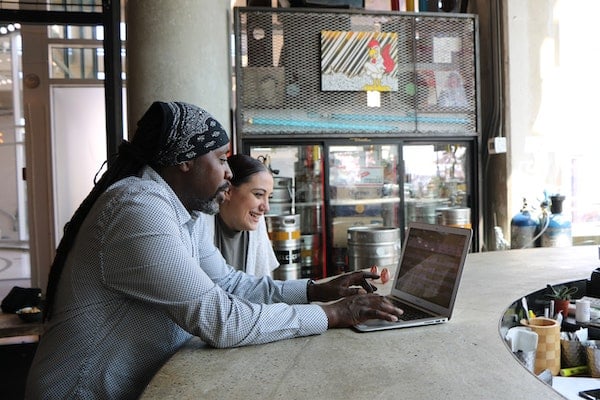Published on
Responding to the Evolving Employer Needs

It can be difficult to respond to learners’ needs fast and efficiently, but when it comes to the workforce, you need to be able to turn on a dime. Not only should institutions provide the right programming based on market demands, but faculty should have a deeper understanding of the technologies students use. In this interview, Rick Huijbregts discusses the challenges of keeping up with the ever-evolving world and the collaborative efforts that go into creating a great student experience.
The EvoLLLution (Evo): When talking about responsiveness, what is the responsibility of colleges to ensure that programming is relevant to these constantly changing needs of employers and industry?
Rick Huijbregts (RH): This is our job: we are here to help our students access and develop relevant skills that prepare them for tomorrow’s careers. This is especially critical in today’s disruptive and transformative society, but frankly, this is what we’ve always done. The workforce is changing faster than ever before. It’s being transformed by digital advances, and now, by the pandemic. We have to be agile and responsive to these realities.
How do we make sure that our students get the education and tools to become productive participants in the local, national, and global economies? We have the obligation—both to our students and to ourselves—to constantly evolve with the changing market and make sure that we deliver the most current, relevant and authentic curriculum possible. To do this, we tap into our industry partners through program advisory committees, employ some of the best faculty with industry expertise, and push ourselves to collaborate and innovate to deliver academic excellence.
Evo: What are the most significant challenges that can bar colleges and universities from keeping up with the constant level of change that happens in the outside world?
RH: We have a role to play in cutting through the hype, through the fad and making sure that what we deliver is of high quality. Our curriculum has to be current and relevant, and therefore we can’t be chasing every shiny object or latest trend. At the same time, we are part of a system that isn’t known for speed: it takes a long time to develop, approve and launch new programs. We are very aware that we can’t take two years or more to launch a program today. After two or three years, content will become obsolete again.
We are looking for different ways to be much more responsive. We need to come to market faster with more digestible and compartmentalized learning that students can stack and combine. This feeds the notion of micro credentials and micro-certificates. We want to make this shift without removing the value of what we’ve created for the last 50 years. We have already developed and evolved amazing programs over the years alongside our program advisory committees and faculty, and we plan to continue to do so.
Evo: With stack-ability and program design, is it a bottom-up project that you’re building from scratch, or is it-top down, where you take existing programs and break them down?
RH: We have to do both. We have over 150 programs with hundreds of hours of content that is validated by our industry partners. So, why not start there, right? Now, we may shape and reshape what we have, infusing it with new insights and expertise that industry or faculty offer. At the same time, some of the programs that we’ve had for a number of years may not necessarily meet our future students’ and employers’ expectations. We therefore will also develop new programs and curriculum bottom-up, starting from scratch and developing new learning.
For example, we recently launched a program in service robotics after having seen the emergence of service robots in sectors like hospitality and healthcare. We need to teach students how to work with service robots and incorporate them in their processes. How to program service robots, build them, and study the interaction of man and machine. There’s this whole world out there that is new to all of us, so we took a bottom-up approach with an industry partner in this space. We created and launched programming that we frankly never had before.
Evo: When you develop stackable programs in partnership with an employer or with industry, do you look at the intersection between programming learning outcomes and career progress?
RH: All colleges are at the early stages of figuring out stackable design and micro-credentials. We’re not only working with industry but also with our faculty and academic experts to figure out how to do this. In our 52 years of expertise in curriculum design, quality control, learning outcome focus, the academic lens sets us apart from other learning services that pop up.
Evo: How do you respond to claims that market-responsive non-credit programs are less rigorous than those that go through more formal approval processes?
RH: This may or may not be true. What I do know, however, is that we have 3,000 staff and 2,000 faculty members, and we have been in the business of education for more than 50 years. This counts for something, and we are proud to build upon our strong history of developing quality education.
Historically, higher education hasn’t had much of a competitive marketplace, but the rapid market growth of non-credit programming is making us better. It shouldn’t be “us versus them”.
We all have a role to play in the lifelong learning cycle. We need to figure out ways to collaborate if we really want to elevate innovation.
When we think about online simulation, for example, if we bring together our experience and history with our faculty, and the tech and innovation sectors, we can start to deliver more choices and get better results.
Evo: What are some steps to take as institutions, but also as an ecosystem, to create a more student-centric modularity and customer experience?
RH: We have a long way to go when it comes to digital transforming our offerings and processes in order to truly transform the customer (student) experience. Younger organisations may have a head start. The strength of having 30,000 students and a well-developed student services engine, however, allows us to hone in on that and rapidly introduce best practices from other sectors and industries.
We can learn a lot from companies like Amazon and Google. Key to all this is partnerships. We can only truly transform the student experience if we work together across our sectors and industries. It’s valuable to be able to pick and choose from learning around the world.
Personalization and lifelong learning are part of our strategic vision. We take a long-term vision to really identify the major pivots and shifts we’re going to have to make as a post-secondary institution. We try to both disrupt and transform ourselves—to continue to build, benefit and grow from that.
Evo: Is there anything you’d like to add about this shift towards innovative market responsiveness in the college sector?
RH: We all have a long way to go, whether you’re a small company or a large corporation getting into education. It’s the same for us; we’re also in the business of education. Companies like Google have micro-certificates, but they’re not in the business of education, so teaming up with them could lead to amazing things.
Making meaningful connections and putting learners at the heart of all of this is key. It’s not about our individual institutions or processes, it’s about the ever-changing learner’s needs. We need to identify where we’re going to play a key role, and we have to partner and collaborate with others to really round out the lifelong learning journey. We do this every day, so there’s tremendous opportunity for all of us to deliver something new. It’s an exciting time, and the truth is, this pandemic became a wake-up call for institutions to reimagine higher education.
This interview was edited for length and clarity.
Disclaimer: Embedded links in articles don’t represent author endorsement, but aim to provide readers with additional context and service.



